The China Coast Guard has ‘bulked up’ the size, numbers and firepower of its ships, blurring the traditional role usually associated with such organisations.
The China Coast Guard (Zhōngguó Hǎijĭng, or CCG) is believed to be the world’s largest coast guard and serves as a coordinating agency for law enforcement as well as maritime search and rescue (SAR) in the territorial waters of the People’s Republic of China.
The CCG was originally the maritime security arm of the Public Security Border Troops, a paramilitary organisation under the Ministry of Public Security (MPS). However, in March 2013 the central government in passed the State Council Institutional Reform and Functional Transformation Plan, which mandated the restructuring of the then-State Oceanic Administration (SOA) – a civilian agency under the State Council – and the incorporation of all maritime law enforcement units into the CCG under SOA command from July 2013.
This arrangement turned out to be relatively short-lived. Oversight of the CCG under a civilian administration resulted in co-ordination challenges with People’s Liberation Army Navy (PLAN) in maritime security operations, prompting the government to introduce another round of reshuffling. In March 2018 the SOA was dissolved and its responsibilities subsumed into the newly formed Ministry of Natural Resources, while the CCG was transferred from civilian control to the People’s Armed Police (PAP) from July 2018, ultimately returning it under the umbrella of the Central Military Commission (CMC).
Although there appears to be no seismic changes in the assigned missions from when the CCG was under the civilian control of the State Council and the SOA, reports in state-owned media including the China Daily and Global Times newspapers have suggested that the enforcement powers of the CCG would have been expanded under new legislation, enabling the service to “play a bigger role in emergencies and crises, including war”.
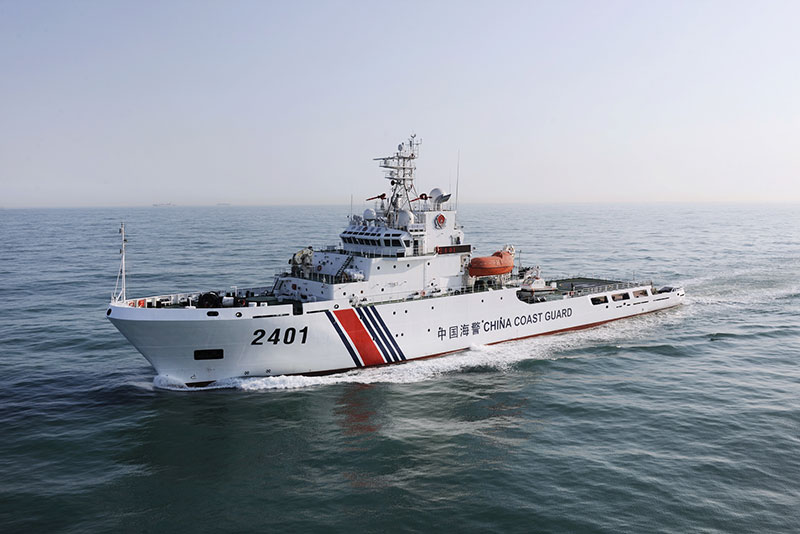
PAP commander General Wang Ning was quoted by the China Daily noting that the CCG has benefited from “new command systems, operational mechanisms, and co-ordination patterns” that has conferred new status and powers beyond its earlier mandate under civilian administration. However, the role of the CCG during periods of tension or conflict remains unclear, although some China-based commentators have noted the potential of the service being deployed for joint military drills and other routine drills with the PLAN.
More than meets the eye
CCG assets have often been deployed for missions beyond the service’s declared law enforcement and maritime security remit. Its vessels have regularly been involved in territorial disputes in the South China and East China Seas. For example, CCG vessels were involved in a stand-off with the Philippine Coast Guard over the disputed Scarborough Shoal in 2012, which resulted in China seizing and blockading the shoal up to October 2016, when the CCG vessels left the waters without an announcement.
In February 2017, CCG vessels sailed near the disputed Senkaku/Diaoyu Islands – which are controlled by Japan but also claimed by China – in the East China Sea, reportedly entering their 12 nautical mile (nm) boundaries before moving to the contiguous zone just outside territorial waters. Japanese media noted that the intrusion marked the fourth time in 2017 that Chinese ships entered Japanese waters off the islands and followed two days after then-US Secretary of Defense Jim Mattis visited Tokyo and reiterated that the defence treaty with Japan also covers the disputed Islands.
‘High end’ capabilities
China now possesses a coast guard fleets that can even overmatch some of the naval forces in the Asia Pacific region. Indeed, the predecessor of the CCG under MPS command had already received retired PLAN surface combatants that were partially disarmed and refurbished for coast guard duty.
More recently, the CCG embarked on a sustained effort to modernise and expand its fleet, commissioning of a large number of modern, purpose-built ships, with over 100 new ships entering service over the last seven years. The fleet size is now understood to number well over 200 vessels. These include the largest coast guard ships in the world: two 12,000 tonne, 165m long cutters that far outclass any other ship operated by regional coast guards including Japan’s 6,500 tonne Shikishima-class cutters – and are even 50 percent larger than the US Navy’s 9,800 tonne Ticonderoga-class guided missile cruisers.
Commissioned into the CCG as Haijing 2901 and 3901 respectively and built by Shanghai’s Jiangnan Shipyard, the cutters can attain a reported a maximum speed of approximately 25kts and are both heavily armed for coast guard ships with 76mm rapid fire guns as well as close-in auxiliary and anti-aircraft machine guns. The vessels are also equipped with a stern-mounted helicopter deck and hangar facilities that can accommodate medium-lift rotary wing aircraft as well as unmanned aerial vehicles (UAVs).
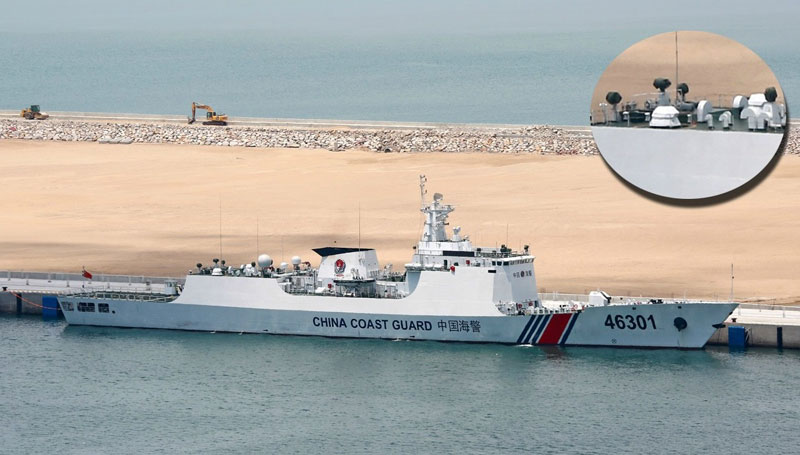
In May 2017, the Chinese government announced that Haijing 3901 completed its maiden voyage in the South China Sea carrying a crew of 17 law enforcement personnel and two unspecified UAVs, spending 19 days patrolling the waters around Chinese-held islands to “protect China’s maritime rights”.
The CCG also operates at least six 3,500 tonne, 134m long Type 818 patrol ships derived from the hull of the PLAN’s Type 054A Jiangkai II-class frigate. Like the cutters, the patrol ships are heavily armed for coast guard vessels with a 76mm PJ-26 naval gun as its primary weapon and a pair of Type 630 30mm close-in weapon systems (CIWS), mounted on either side on top of the helicopter hangar. However, the PLAN’s original anti-submarine and anti-ship weapons, as well as its surface-to-air missiles, have been removed.
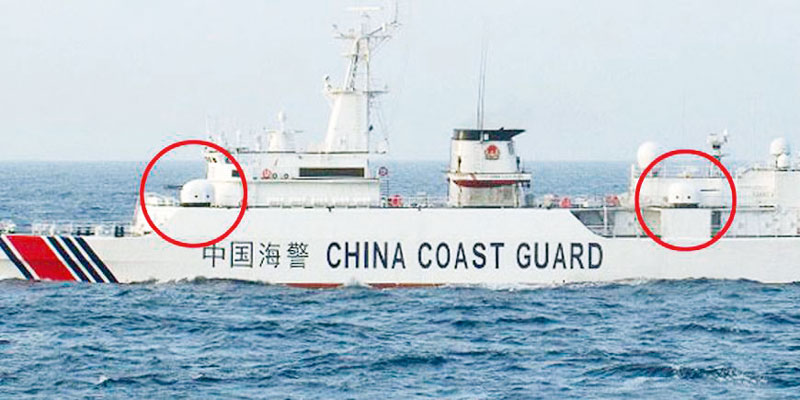
Other naval designs have also been leveraged for constructing CCG ships. The Huangpu shipyard in Guangzhou, southern China, has constructed new coast guard ships based on the hull of the PLAN’s 1500 tonne Type 056 Jiangdao-class corvettes.
Equipping the CCG with such platforms will likely facilitate integration with PLAN assets, potentially exploiting common communications facilities, sharing intelligence data on shipping, and allowing both forces to build a common operational picture for improved maritime situational awareness. This will boost the ability of CCG ships to respond quickly to situations that the central government might consider detrimental to national interests.
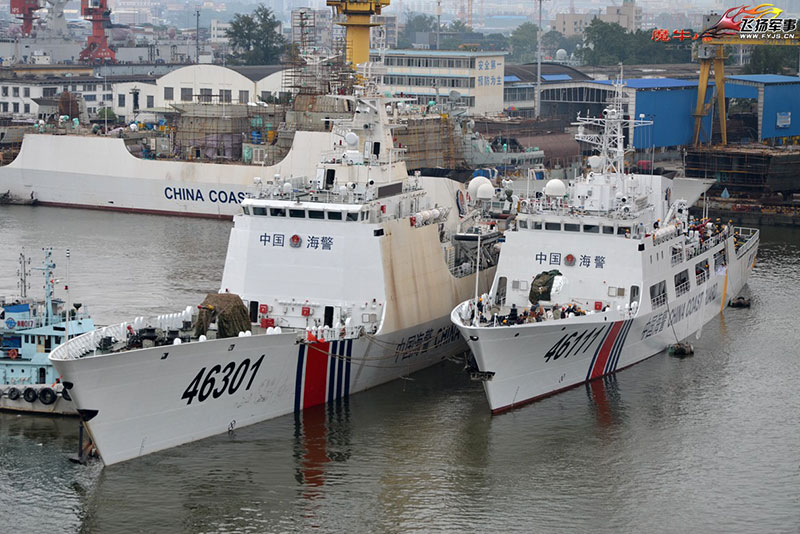
Moreover, with the PLAN continuing to recapitalise its fleet with new and more capable surface combatants, it is likely that the CCG will benefit from yet more of the former’s divested naval platforms.
Although the CCG has traditionally possessed a modest air arm, the service has nevertheless made some effort to inject new capability into it given the vast maritime territory that has to be monitored.
Chinese media has reported that the CCG received its first Xian Aircraft Industries MA60 twin-turboprop aircraft configured for maritime patrol missions in April 2016, following successful final airworthiness trials. The aircraft, which has also been referred to as the MA60H, is equipped with a chin-mounted electro-optical surveillance system and a ventral surveillance radar.
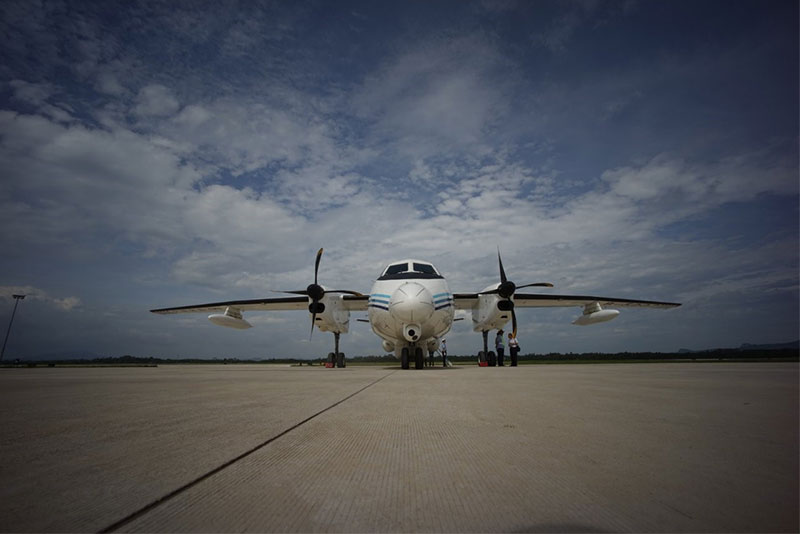
The aircraft has also been modified for extended range patrols with auxiliary fuel tanks fitted to the sides of its fuselage and can carry additional fuel tanks on underwing pylons. It is not known how many had been acquired by the CCG.
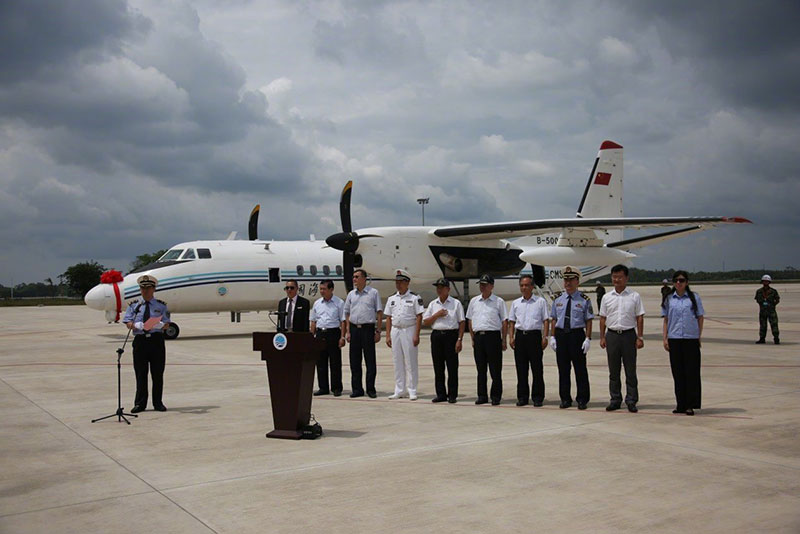
What next for the CCG?
With its current and future capabilities, the restructured CCG under the aegis of the CMC has turned out to be a maritime constabulary force quite unlike its counterparts elsewhere in the region. The time and resources invested in boosting the service’s capabilities also indicates that the central government is eyeing a more active presence in the East China Sea and Taiwan Strait. For instance, the CCG could be deployed along the vital sea lines of communication (SLOC) to and from China, safeguarding the country’s Maritime Silk Road in the near future.
These new measures have been put into practice in recent training exercises in Chinese territorial waters. In May 2018, state-linked media reported that a joint task group comprised of naval, coast guard, and civilian vessels patrolled waters off the Paracel Islands together for the first time. In early August of the same year, it was also revealed that the PLAN’s Southern Theatre Command conducted a joint exercise with the CCG.
The CCG is without doubt providing the central government with a greater range of operational flexibility and diplomatic options in politically sensitive areas, given that naval platforms, with their array of lethal weapon systems, present a greater risk of minor incidents escalating into serious skirmishes.
by JR Ng













